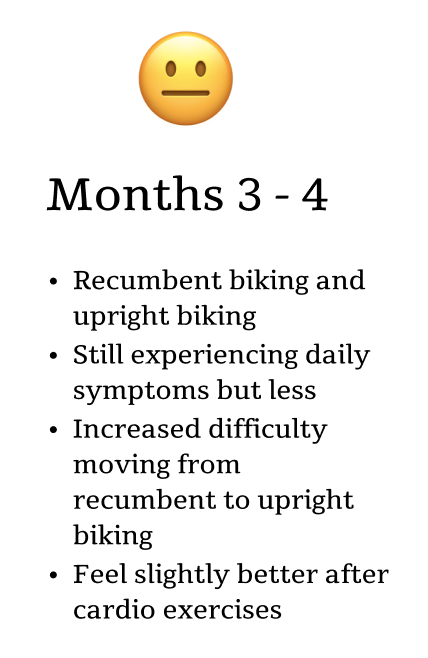
Doctors frequently recommend exercise as a foundational approach to managing POTS symptoms. However, what many people don’t realize is that not all exercises are helpful. Only after figuring out how to exercise properly with POTS did I see my symptoms drastically improve.
The Challenge of Exercise Intolerance With POTS
POTS is often characterized by exercise intolerance. Physical activity that used to be easy became almost impossible. Before POTS, I used to fast walk 30 minutes to work. After POTS, I could barely go around my block.
When I was first diagnosed, I followed my doctor's advice and attempted to incorporate exercise into my life by using a verticle climber

However, it quickly became apparent that I was doing something wrong. Just 2 minutes on the climber would send my heart rate to 160. I would be completely out of breath, shaking, and feeling my heart pounding in my check. It was miserable.
Discovering the Dallas CHOP Exercise Protocol
After struggling with exercise for several weeks, I reached out to my doctor for guidance. She recommended the Dallas CHOP Exercise Protocol, a structured exercise program specifically designed for individuals with POTS. She also said it could take 5 months to see the results of the program. Despite my initial skepticism about the program's effectiveness and lack of enthusiasm at having to exercise for 5 months, I decided to give it a try out of desperation.
Committing to the Exercise Protocol
I committed to following the Dallas CHOP Exercise Protocol for 6 months. Despite my initial reluctance, I persisted, hoping for a breakthrough in managing my POTS symptoms. My progress and feelings at exercise can easily be summed up by the emoji table below:



Recumbent Exercises: A Better Way to Exercise with POTS
Before POTS, I’d never heard of recumbent exercises. Everytime I thought of someone exercising, I thought of running, climbing, or weight lifting, but those are all vertical exercises and can be extremely difficult for people with POTS. Recumbent exercises are horizontal. The horizontal nature of the exercise reduces the amount of blood pooling in your legs and makes it easier to exercise.
In the first few months of the CHOP exercise protocol, you only do horizontal exercises, such as a recumbent biking or a rowing machine. After a couple of months, you can begin upright biking and then standing exercises a few months later.
I opted for the recumbent bike. This minor change in exercise made all the difference. When I had originally tried to exercise with a vertical climber, it was a dumpster fire, and I could barely last 2 minutes. With the recumbent bike, I was able to complete my full workout of 50 minutes by the 3rd month.
Seeing Results: The Power of Consistent Exercise
As the months went by, I began to notice gradual improvements in my symptoms. By the fifth month, I felt a significant difference in my overall well-being. While I still had POTS, my main symptom of heart palpitations lessened by 80 - 90% depending on the day. I also felt stronger and fitter than I had in years. It was a testament to the effectiveness of consistent, targeted exercise for POTS management.
Integrating Exercise into POTSie: A Personalized Approach
Recognizing the importance of exercise in my POTS management strategy, I took steps to streamline my routine. I incorporated an exercise tracker into POTSie, a personal POTS management app, to simplify the process. Now, instead of fumbling with PDFs and my daily routine, I can access my exercise plan directly from the app, making it easier to stay on track with my workouts.
